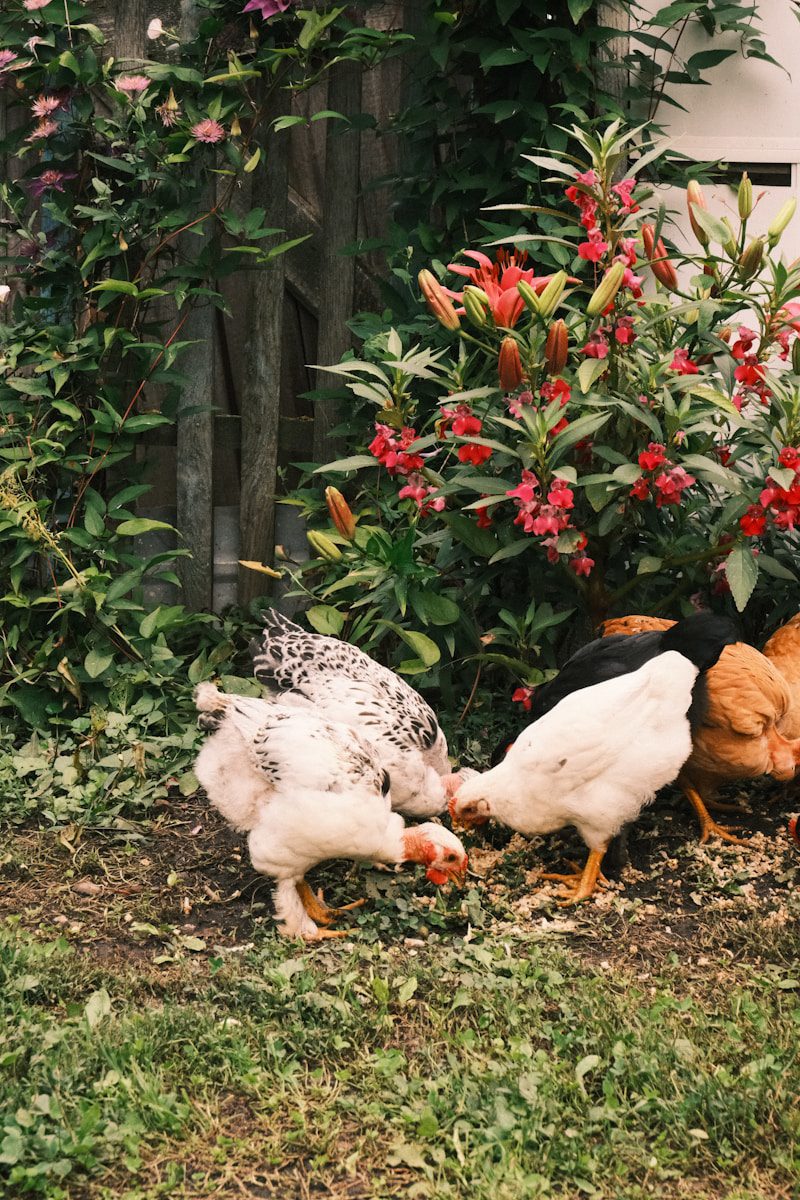
A garden is a place of peace, beauty, and food. Chickens, as lovely as they are, can quickly turn that space into chaos. They scratch up soil, eat young plants, and scatter mulch like tiny feathery bulldozers. While we enjoy their eggs and their company, we don’t always want them roaming freely in our growing beds.
The good news is that you don’t have to choose between chickens and a thriving garden. With a mix of barriers, training, and clever design, you can protect your plants while still giving your flock room to explore. Let’s look at the best ways to do it.
Why Chickens Head for the Garden
Chickens are curious by nature. They don’t mean to destroy your garden, but their habits cause trouble. Scratching is how they search for bugs and seeds. Dust bathing is how they keep their feathers clean. Pecking at greens is part of their diet. To them, your garden is paradise. To you, it can feel like sabotage.
Understanding their instinct helps us find better solutions. Instead of trying to change their nature, we guide it.
Practical Ways to Protect Plants
Fencing and Barriers
The simplest defense is a barrier. A chicken can’t ruin what it can’t reach.
- Wire fencing: A 3–4 foot tall fence works for most flocks. Some adventurous birds may fly over, so consider adding mesh or netting above if needed.
- Garden hoops and row covers: These protect smaller plants and seedlings while still letting in sun and water.
- Chicken wire collars: Wrapping a circle of wire mesh around the base of larger plants keeps scratching feet away.
Designated Chicken Zones
Give your flock a place where digging is allowed. A dust bath pit filled with sand, ash, or dry soil keeps them busy. A compost corner stocked with garden scraps can also redirect their energy. If they have their own playground, they’re less tempted by yours.
Raised Beds and Containers
Height is your friend. Chickens are less likely to climb into tall beds or knock over sturdy pots. Raised beds not only protect plants but also make gardening easier for you.
Deterrents
Some gardeners use harmless deterrents to keep birds at bay. Wind spinners, reflective tape, or even motion-activated sprinklers startle chickens just enough to teach boundaries. The key is consistency—place them where the flock tends to wander.
Training and Routine
Chickens are creatures of habit. With time, they can learn where they’re welcome and where they’re not.
- Supervised free-ranging: Let them roam only when you are present. A quick clap or gentle shoo teaches them to avoid the garden.
- Treat training: Toss grain or scraps in their designated zone so they associate that area with rewards.
- Timing: Allow them out late in the day after they’ve eaten. A full crop means less mischief.
Finding Balance Between Flock and Garden
The goal isn’t to keep your chickens locked away forever. It’s about balance. You want eggs, pest control, and happy hens. You also want healthy vegetables and flowers. Both are possible.
Chickens can even help if managed well. They till soil in fall, clean up weeds, and eat pests. By guiding when and where they work, you protect your plants and harness their natural skills.
Shared Spaces, Peaceful Places
Keeping chickens out of your garden doesn’t mean shutting them out of your life. It means setting clear boundaries. With fences, raised beds, and clever training, your garden stays safe and your flock stays happy.
In other words, we don’t fight against their nature. We work with it. That’s the secret to harmony—healthy plants, thriving chickens, and a space where both can belong.
